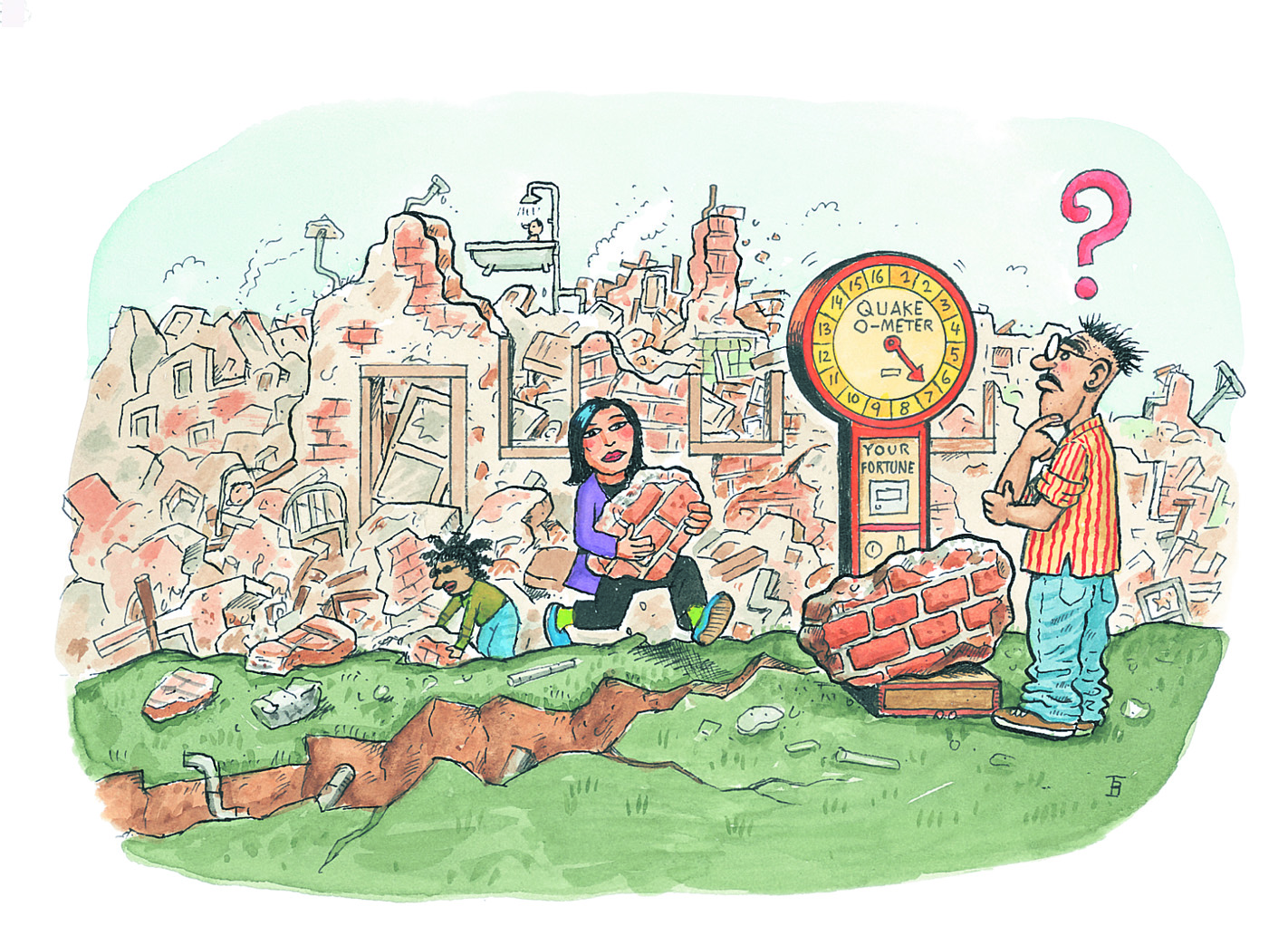
Overview
In this section you will find materials that support the implementation of EarthComm, Section 12: Earthquake Magnitude.
Learning Outcomes
- Analyze and interpret data from personal observations of the effects of an earthquake to locate an earthquake’s epicenter.
- Examine an online tool used by scientists to collect and analyze data from people’s experiences of an earthquake.
- Obtain information about the extent of the damage caused by earthquakes of different intensities.
Using Technology
To learn more about seismic waves, complete the following:
Measurement of Earthquake Wave Amplitude
- Visit the Virtual Earthquake website at http://www.sciencecourseware.com/VirtualEarthquake/. The Virtual Earthquake website will help you to simulate a new earthquake.
 Follow the directions to calculate the magnitude of the earthquake.
Follow the directions to calculate the magnitude of the earthquake. How does the amplitude (height) of a seismic wave change when the size of an earthquake changes?
How does the amplitude (height) of a seismic wave change when the size of an earthquake changes? How would you expect the amplitude as recorded on a seismogram to change as you get farther from the epicenter?
How would you expect the amplitude as recorded on a seismogram to change as you get farther from the epicenter?
Inquiring Further
- To learn more about detecting and recording earthquakes, visit the following web sites:
Did You Feel It?, USGS
Take part in citizen science by sharing your intensity observations for an earthquake you experienced.
Earthquakes and Seismicity - Magnitude vs Intensity, USGS
Describes the energy released by an earthquake. Includes a good explanation of the difference between magnitude and intensity.
Earthquake Intensity Database 1638 - 1985, NOAA
Includes an earthquake intensity location map of North America. Allows searches for specific earthquakes by city and state, so you can look up the intensity of historic earthquakes in your community.
- To learn more about the ways earthquakes are measured, visit the following web sites:
Global Seismographic Network, USGS
Description of the Global Seismic Network (GSN) and how it is used to study earthquakes around the world.
Monitoring Earthquakes Across the United States, USGS
Brief description of how seismograph networks are used to monitor earthquakes across the country.
Seismometers, Seismographs, and Seismograms, etc., USGS
Use the Earthquake Glossary to see how seismographs work, how P and S waves move and learn to read Travel-Time curves.
- To learn more about tsunami warning system in the Pacific, visit the following web sites:
The Tsunami Story, NOAA
Learn about tsunamis from generation to wave propogration to forecasting and impacts.
Tsunami: the Great Waves, NOAA
Description of how the Tsunami Warning System (TWS) for the Pacific region works.
NOAA Center for Tsunami Research, NOAA
Describes research and development efforts in tsunami monitoring networks. Includes data on recent tsunamis and spectacular animation.
Local Tsunamis in the Pacific Northwest, USGS
History of local tsunamis, including geological evidence and legends surrounding these giant waves.
Tsunami Fact Sheet, FEMA
Reviews what a tsunami is and what kinds of damage are typically associated with a tsunami occurrence.
Tsunami, NOAA
What does it mean to be tsunami ready? Find out this an more tsunami news from NOAA.
Tsunami Resources and Links, NOAA
Multiple topics concerning tsunamis to chose among. Including video of similuations such as the Alaska earthquake of 1964.
The 2004 Sumatra Quake and Tsunami, IRIS
Visualization of the propogration of the earrthquake waves showing record of waves arriving at different monitoring stations.
Resources
To learn more about this topic, visit the following web sites:
Seismometers
A Brief History of Seismology to 1910, Institute for Crustal Studies, University of California at Santa Barbara
Read about early explanations for earthquakes and the start of the "modern era" of seismology around 1750. Follow the development of the science of earthquake study.
Latest Earthquakes, USGS
Updated list by date, magntude, location, and depth. Zoom in and out of map or select region from menu.
Seismic Monitor, IRIS Consortium, University of Washington
Map is updated every 30 minutes - shows locations of earthquakes as well as seismic events on or near nuclear test sites. Also include earthquake news and teachable moments.
Seismometers, Seismographs, and Seismograms, etc., USGS
Use the Earthquake Glossary to see how seismographs work, how P and S waves move and learn to read Travel-Time curves.
Interpreting Seismograms
How Do I Read a Seismogram?, USGS
This video will help you learn to read seismograms.
Seismographic Networks Improve Volcano Warnings, USGS
Descriptions of how seismometry is used to monitor volcanic eruptions. Contains good images of technology.
Different Processes: Different Seismic Signals, USGS
Learn how to distinguish the seismic signal from a landslide compared to a glacier sliding or an actual tectonic event.
